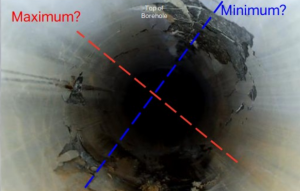Fault damage zones
Advances in the past decade allows scientists to capture and simulate first-order characteristics of the earthquake cycle, but challenges remain in understanding the randomness and spatial variability of earthquake phenomena. In this research topic, we want to characterize the ductile deformational properties of fault damage zone rocks and evaluate the importance of such behavior on fault mechanics. Most analytical and numerical fault mechanics models treat faults as a frictional interface embedded between elastic host rocks and does not take into account the peculiar characteristics of the damage zone surrounding the fault plane. However, damage zone rocks may undergo time-dependent ductile deformation even under crustal conditions, which has significant consequences on how shear stress develops on a fault during the interseismic period. We first investigate the constitutive behavior of damage zone rocks, and next the constitutive law is combined with fault frictional properties in a numerical model. It allows us to quantify the relative contribution of each domain, damage zone and fault core, to the total fault deformation during interseismic tectonic loading. Many geophysical observations suggest that permanent off-fault deformation may be occurring over long time scales (greater than a year).
Stress measurements

Information about in situ stress is essential for a variety of geological engineering problems, for example: borehole stability, hydraulic fracturing design, CO2 sequestration, induced seismicity, as well as tunneling or rock slope stability. It is not straightforward to measure stress though. In the Rock Mechanics Group, we have been investigating and developing new methods of underground stress measurement in two DOE funded projects: Thermal Breakouts and Directional Cooling Induced Fracturing.
One of the most common methods of estimating the maximum principal stress is to use borehole wall failures, breakouts. Based on the geometry of a breakout we assess the stress state which led to its development. However, it is a passive method and if a breakout does not develop spontaneously during drilling (because the rock is too strong with respect to the stresses) the information is limited. Therefore, in the Thermal Breakout project we extended the standard breakout method by an active component. The walls of a borehole are heated which induces additional compression and eventually leads to formation of a thermally-induced breakout. Our main task in the project was to evaluate the method experimentally in a large scale true-triaxial apparatus.
The idea of the second project also included thermally-induced stresses. This time however, the goal is to create tensile fractures by cooling discrete azimuths of the borehole wall and reconstruct the hoop stress sinusoid around the borehole. Next, the reconstructed hoop stress serves to calculate the magnitude of the far-field stresses.
Shale gas
Natural gas is an important transition fuel as we march towards a carbon neutral energy sector. Burning natural gas produces orders of magnitude less pollution compared to burning coal or oil. Therefore, it is important to continue developing unconventional natural gas reservoirs. This development however, still presents significant challenges. First challenge appears at the exploration stage, as shale rocks are known to exhibit creep and relaxation behavior which modifies the state of stress in reservoir layers. Shales are said to relax stresses, but it does not necessarily mean the stress is decreasing – stress relaxation means that the stress becomes more isotropic, with all principal stresses being close in magnitude. The process of relaxation then, may result in significant stress increase. Knowledge of stress is crucial for success of hydraulic fracturing operations and thus the understanding of creep and stress relaxation in shales is crucial. Another challenge related to shale play development is the production decay due to time-dependent closure of fractures created during initial fracturing, as well as embedment of proppant grains into rock matrix. These processes reduce the permeability and decrease well productivity over time. It is important to address these challenges by simulating reservoir conditions in the laboratory which is one of the ongoing research topics in our group.